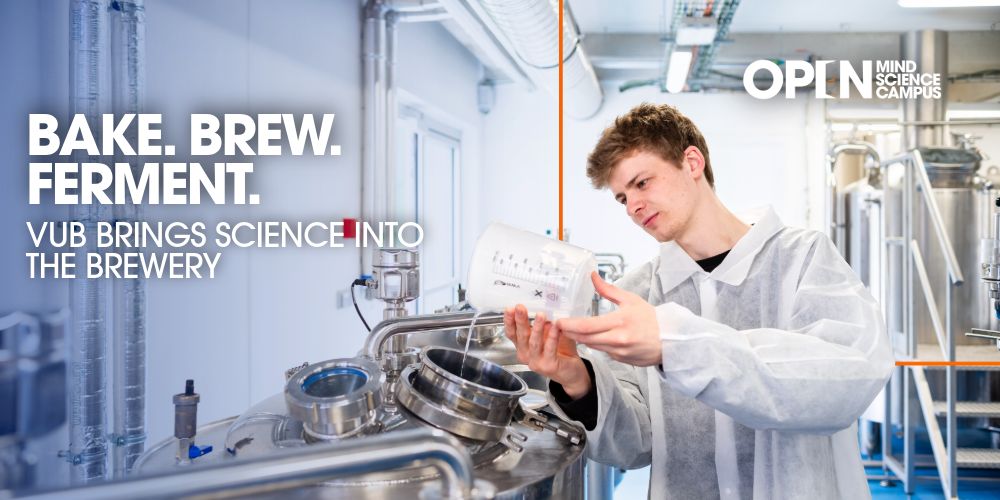
In the old blue student dorms, things have taken a tasty turn: sourdough bread is being baked, beer brewed and chocolate crafted. Delicious, yes — but for the scientists of the Industrial Microbiology and Food Biotechnology research group, the real goal in the Fermented Food Pilot Plant is to satisfy a different kind of hunger: scientific curiosity. Their research focuses on microbiological fermentation processes, which have a huge impact on what the English neatly sum up in one word: flavour — the perfect combination of taste and aroma.
“The proof of the pudding is in the eating,” as the English like to say. And that’s exactly what more than three hundred volunteer tasters come to do in the Fermented Food Pilot Plant — but instead of pudding, they sample VUB’s very own beer, sourdough bread and chocolate. Test participants sit in individual ‘evaluation booths’ and are presented with, for example, three small pieces of chocolate. The curtains close, and the tasting begins. Between each sample, they rinse their mouths with a sip of water. This is what’s known as sensory chocolate analysis.

The chocolate itself is made by the researchers, using cocoa beans sourced from Ecuador. On-site, the beans were fermented and dried in several different ways. During the test, participants receive two pieces of chocolate made using the same process, and a third piece from a batch fermented differently — either at another stage or using another method. The researchers hope the tasters can identify the matching pieces. If they succeed, it proves one of two things: either the production process is reliably repeatable, or it has a direct impact on taste and aroma.
Chocolate with fruity esters
VUB’s chocolate stands out. On the tongue, it’s distinctly bitter — as you’d expect from chocolate with 81% cocoa — but there’s also a subtle tanginess and, surprisingly, a burst of fruity aromas. This rich palette of flavours and scents is all thanks to fermentation.
Fermentation is a natural biological process in which micro-organisms — such as bacteria, yeasts and moulds — play a key role. They convert compounds present in the surrounding medium into desirable organic substances. In the best-case scenario, this makes food healthier, safer, tastier or longer-lasting.
Cocoa is a prime example. Fermentation breaks down the sweet, white pulp surrounding the beans. At the same time, ethanol and acetic acid are formed, which prevent the bean — technically a seed — from germinating. Meanwhile, the cell membranes within the cocoa beans are destroyed, causing different compounds and enzymes to mix and trigger chemical and enzymatic reactions. These reactions are responsible for the distinctive aromas that develop when the beans are later roasted.
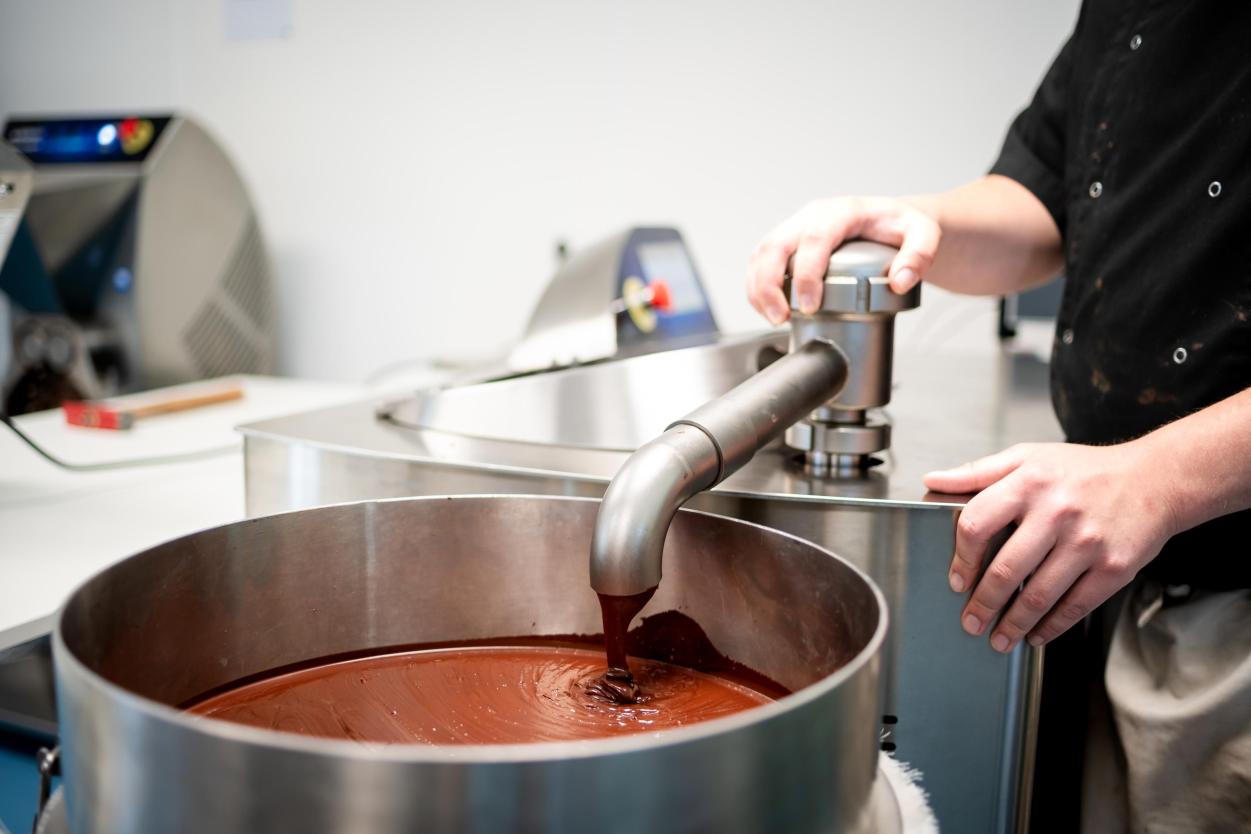
“Our main goal is to produce esters — organic compounds that give chocolate its fruity flavours and aromas”

Fermentation, then, is crucial for chocolate’s taste and aroma. Traditionally, the fermentation of cocoa beans happens spontaneously: farmers spread the beans out on banana leaves or place them in wooden boxes and let nature take its course. VUB researchers, however, are taking a more controlled approach. They inoculate the pulp around the cocoa beans with a starter culture — a carefully selected mix of micro-organisms — steering the fermentation process in a specific direction.
The organic compounds produced by the starter culture — both precursors and aroma-active substances — penetrate the cocoa beans from the surrounding pulp. These precursors then go on to form very specific aromatic compounds. The VUB researchers are particularly focused on producing esters. These are organic compounds that create fruity flavours and aromas — think of the taste and scent of ripe strawberries, apples, bananas or oranges. These esters explain the fruity notes in VUB’s chocolate. And that little hint of tanginess? That’s because the starter culture produces quite a lot of acetic acid. The team is still fine-tuning the process to tone down that sour edge.
Bread from the past
Bread is the second major focus of the Fermented Food Pilot Plant. The micro-bakery operates along two separate production lines: one for yeast-leavened bread and one for sourdough. These are kept strictly apart to avoid cross-contamination. One of the lines even runs under slight positive air pressure, and bakers must change clothing before moving between the two. Without these measures, the baker’s yeast used for traditional wheat loaves would quickly dominate the sourdough line, making it impossible to conduct controlled sourdough research.
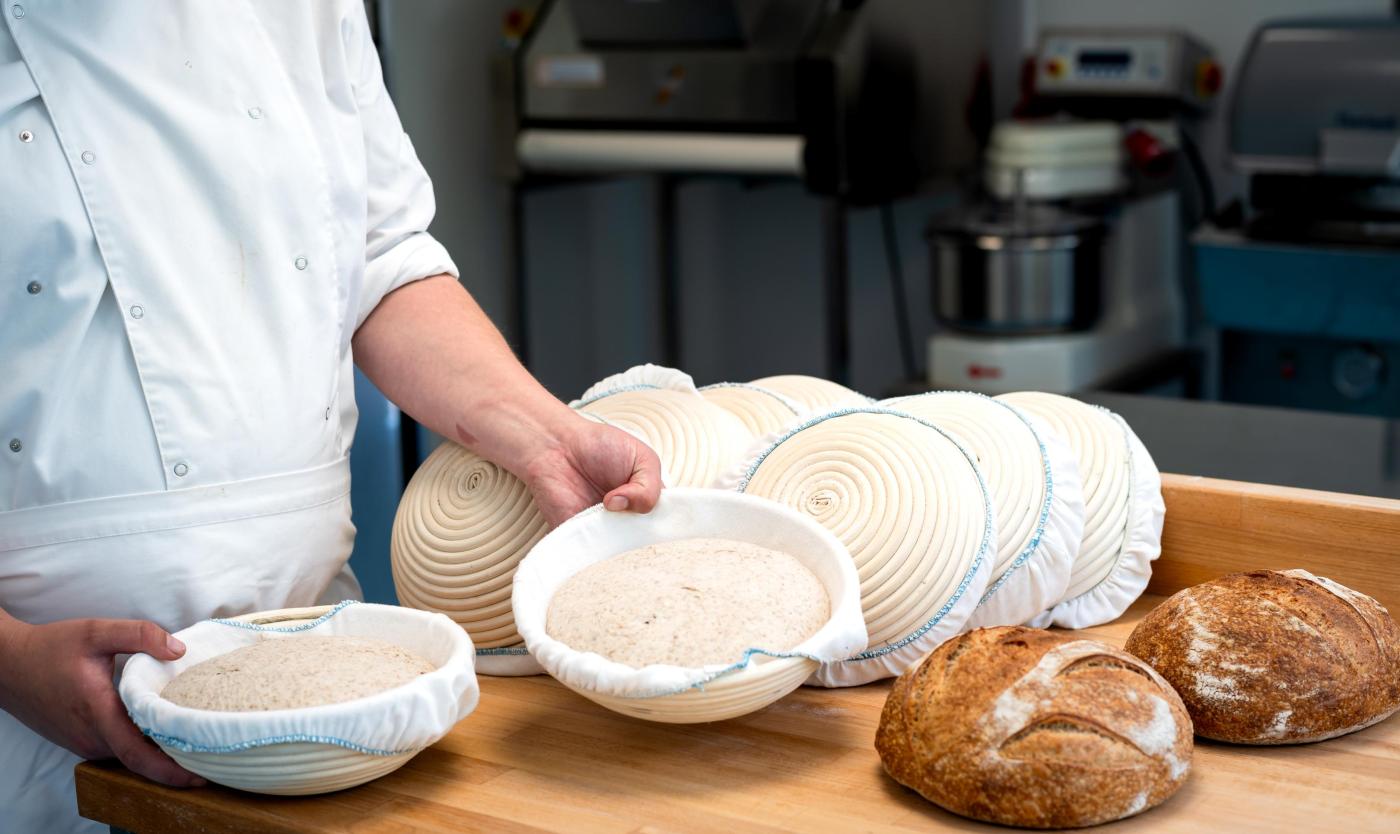
Sourdough bread has been riding the wave of popularity in recent years — another example of spontaneous fermentation. Making your own starter culture at home is simple. Mix 200 g of flour with 200 ml of water and leave to ferment at room temperature. The next day, discard half and add 100 g of flour and 100 ml of water. Repeat this process 10 to 12 times, and you’ll have a starter that’s microbiologically stable enough to bake with. Used sparingly, sourdough isn’t something you’ll taste directly in bread. But when it forms the main component of the dough, you get that signature tangy flavour. Sourdough also helps the bread rise and keeps it fresh for longer — but at the Fermented Food Pilot Plant, researchers are mainly interested in its impact on flavour and aroma.
There’s a familiar complaint, especially on Sunday mornings: local artisan bakers are becoming scarce. Consumers craving the flavours of the past are now willing to pay six euros or more for a trendy sourdough loaf. In the Fermented Food Pilot Plant, researchers are trying to bridge the gap between artisan sourdough craftsmanship and affordable industrial bread production.
“Our fermentation process is faster, without compromising flavour or aroma”
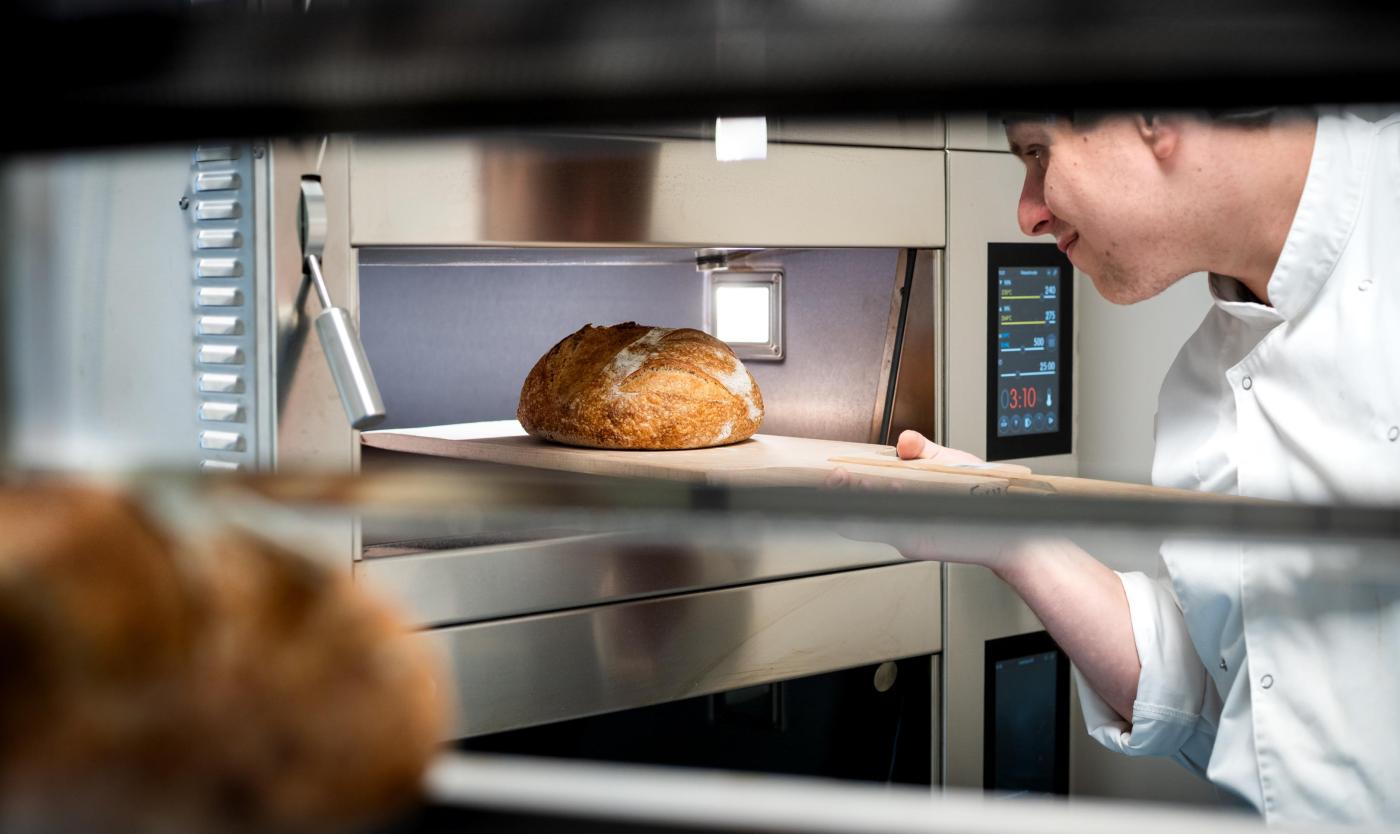
To achieve this, they experiment with ancient grain varieties (see sidebar) and alternative sourdough cultures. Once again, the focus is on esters — the compounds that produce fruity flavours and aromas. After decades of research, the team has developed a new, stable sourdough: a so-called micro-bioconsortium, combining a yeast and a lactic acid bacterium never before used together in this way. The result, fresh from the oven after thirty years of research: the first batch of VUB sourdough bread. Production is limited — the oven can handle only about twenty loaves per bake. For now, VUB sourdough bread will mainly be served on campus, at receptions and celebrations.
One of its key features is the shortened fermentation time. Traditionally, making sourdough bread — including kneading, fermenting and baking — takes 12 to 16 hours. That’s why artisan bakers often start their dough the night before, so loaves can hit the oven at dawn.
Factories, however, don’t have that luxury. To keep up with demand, the industry developed faster methods, such as the Chorleywood bread process — hugely popular in the UK and other Anglophone countries. It produces bread in just a few hours, but the result is the familiar soft, square loaf in a plastic bag, the kind you can compress into the size of a golf ball. The only way to give such bread a bit of crunch and flavour is to toast it.
VUB’s sourdough takes a different approach. Its fermentation process is significantly faster than traditional sourdough, yet it preserves the authentic flavour and aroma. Once again, the Fermented Food Pilot Plant bridges the gap between artisan tradition and industrial production techniques.
Between tripel and lambic
This ambition extends to the microbrewery too. The research has already led to several new beers under the brand name Saint V, including the Darolus Tripel and Darolus Sour Blend — the latter a mix of Darolus Tripel and lambic. Coming soon: the Darolus Sour Ale, a particularly ambitious project. The goal is to establish an entirely new, fifth brewing process.
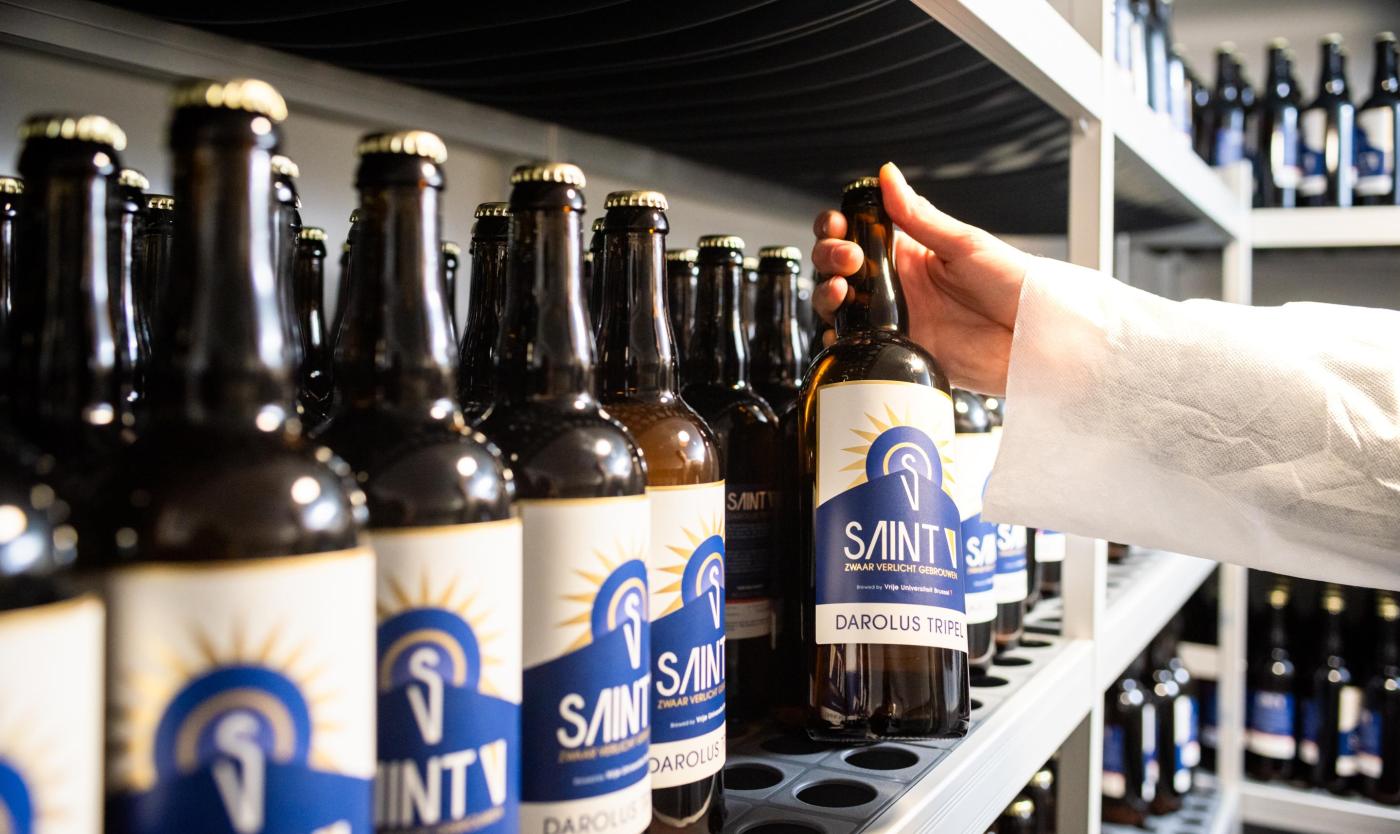
Traditionally, there are four brewing processes, and Belgium is the birthplace of them all. In the first two methods, brewers add yeast to start fermentation. These include bottom-fermented beers — such as pilsner — and top-fermented beers, the so-called ales, like tripel. The third brewing process, used for red-brown beers such as Rodenbach, combines yeast with lactic acid bacteria. The fourth method relies on spontaneous fermentation, which produces lambic beers. Gueuze blenders, or geuzestekers, then mix young and aged lambics to create gueuze beers.
Exactly how spontaneous fermentation works in lambic brewing is something VUB researchers have been investigating for years. It’s sensitive territory, as lambic brewers and gueuze blenders take their traditions very seriously. Very seriously.
“We want to develop a new brewing process: a Sour Ale with a tangy, fruity flavour — somewhere between a tripel and a lambic”
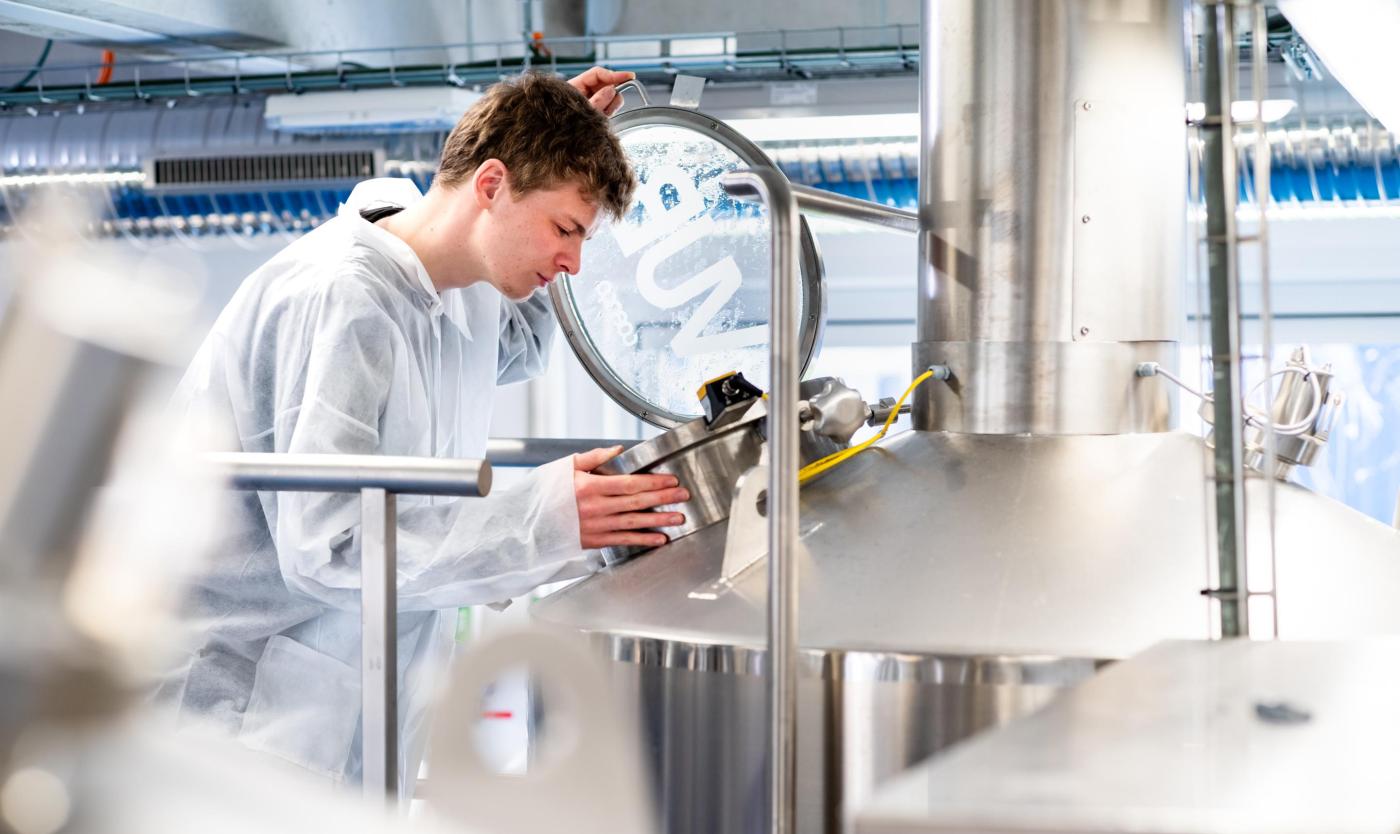
Legend has it that the air of the Zenne Valley carries unique micro-organisms that enter the wort as it cools in open vats, naturally kickstarting fermentation. If that’s true, it would mean lambic can only be brewed in that region.
While these airborne microbes may play a role, the researchers from Industrial Microbiology and Food Biotechnology point to another, likely more critical factor: the oak barrels. Lambic matures for one to three years in old, fully leached wine casks. The team’s hypothesis is that a wild yeast, Brettanomyces bruxellensis, lives deep within the pores of the wood, eventually migrating into the beer. Oxygen entering through these pores might also contribute to the spontaneous fermentation process.
The Fermented Food Pilot Plant’s ambition is to develop a fifth brewing process — one combining two yeasts, a lactic acid bacterium and an acetic acid bacterium. The result will be a Sour Ale with a tangy, fruity profile, sitting somewhere between tripel and lambic.
Its major advantage? Maturation time. Whereas lambic requires one to three years in oak barrels, the VUB method uses a top-fermentation system — the same used for ales — to achieve a similar flavour profile in just 10 to 20 days. And instead of oak casks, the process takes place in modern stainless-steel fermenters.
Just like with sourdough and chocolate, the Fermented Food Pilot Plant brings together the best of both worlds: preserving traditional flavours while harnessing the efficiency of modern production techniques.